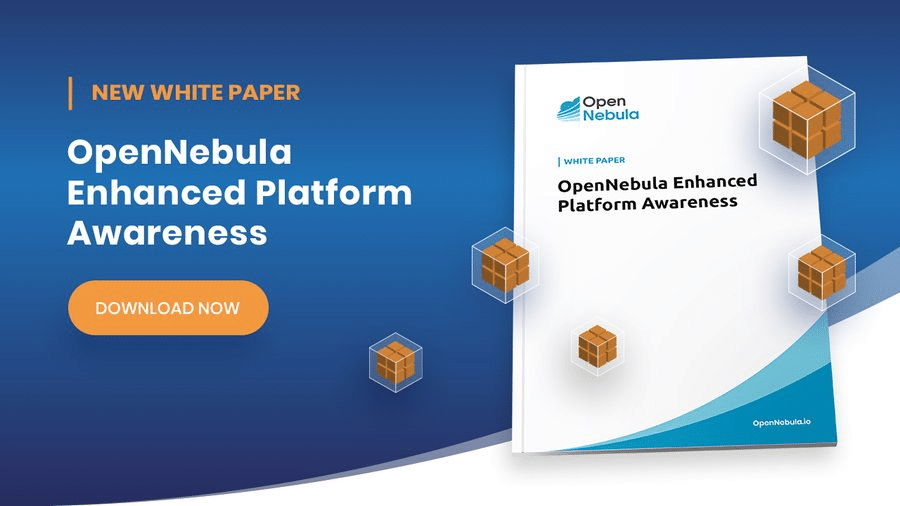The digital world, as we know it nowadays, would not exist without the telecommunications operators. It is their critical infrastructures and backbone services, plus the last-mile connectivity they provide to local businesses and individuals, that have allowed applications, devices, and end-users to actually leverage much more recent technological developments such as cloud computing.
Now, with data processing capabilities gradually moving away from centralized data centers towards the fringe of the network, telecommunications operators are facing an existential dilemma: should they be the ones leading the deployment of the edge cloud infrastructure that private customers and public administrations demand, or should they let someone else (e.g. hyperscalers) play this role in the future?
We at OpenNebula Systems are operating under the assumption that, despite the short-term benefits that programs like AWS Wavelength might offer, telecom companies will sooner or later realize that becoming mere colocation providers for someone else’s infrastructure is not the same as becoming one of the main strategic pieces in the value chain of the future edge computing market.
In this post, we explore how a number of features in OpenNebula have been improved in order to help telecom/5G operators deploy and manage their own edge cloud infrastructures in a more open, flexible, simple, and effective way than the complex, rigid, and proprietary solutions offered by vendors like Red Hat and VMware. Most of these features have been developed in close collaboration with leading Tier 1 operators looking at the deployment of OpenNebula in production environments.
Telco Edge Architectures
OpenNebula comes out-of-the-box with a significant number of edge computing features, providing an easy way to build and manage highly-distributed edge cloud environments using your private infrastructure at the edge. Their aim is to improve flexibility, availability, efficiency, reliance, and scalability—while reducing latency and providing better application response times with an impressive small footprint by processing and storing data closer to users and devices.
OpenNebula allows organizations to achieve a consistent application and operations experience across their entire Enterprise Cloud—from their private cloud or core data centers all the way to their private edge node deployments. Shared concepts like distributed edge-cloud computing and bare-metal provisioning have now become native features in OpenNebula and are the fundamental basis of our approach to the technological challenges that lie ahead.
OpenNebula proposes two main architectures to modernize Telco’s existing networks, help simplify network operations, deploy 5G networks quickly, and adopt open frameworks, such as Open RAN while navigating the disaggregation of their resources.
- Highly Distributed NFV Deployment. A single cloud front-end to manage tens to hundreds of geo-distributed clusters (PoPs with edge nodes) with minimal hardware infrastructure, local storage, and DPDK or SR-IOV technologies for high-performance throughput. The system is used to run Virtual Network Functions (VNFs) like firewalls, load balancers, and other non-generic compute services. The architecture supports the most challenging Virtual Machine workloads, including Network Functions Virtualization (NFV) and high-performance computing workloads. With OpenNebula, Telco customers can deploy both containerized and virtualized network functions side-by-side, and host Third Party services if so required.
- 5G Edge Deployment. Installation of microDCs in Edge Nodes at 5G locations to host O-RAN and offer edge cloud services following a Multi-access Edge Computing (MEC) architecture. By virtualizing their Radio Access Network (RAN), telecom/5G operators can quickly scale software-based network functions to place them at the edge. By using OpenNebula for implementing their MEC strategies, service providers can quickly enable large-scale, latency-sensitive edge applications for their enterprise customers. OpenNebula also allows operators to deploy third-party edge services easily and seamlessly, ensuring the required network isolation and security while providing the application owner full control of their 5G/edge service deployment.

Telco Edge Functionality
The following table summarizes the innovative features provided by OpenNebula to meet the main requirements in challenging Telco deployments ⬇️
| Telco Edge Requirement | OpenNebula Feature |
|---|---|
| Enhanced platform awareness | OpenNebula implements Enhancement Platform Awareness (EPA) features that enable the fine-grained matching of processor capabilities, exposing low-level CPU and NIC acceleration components to the VNF. This includes DPDK and SR-IOV. The combination of OpenNebula, OVS, and DPDK have been used in challenging NFV scenarios. |
| GPU hardware support | GPU support in OpenNebula is already available either through generic PCI Passthrough or through NVIDIA vGPU proprietary drivers. |
| Scheduling | Workloads can be scheduled based on their requirements and the underlying hardware functionality. Including NUMA-awareness and pinning. |
| Bare-metal automation provisioning | OpenNebula’s Edge Cloud Architecture provides out-of-the-box a comprehensive bare-metal provisioning mechanism by fully automating the lifecycle of OpenNebula clusters using on-prem hardware and bare-metal offerings of different cloud/edge infrastructure providers. |
| Multi-clustering | OpenNebula already supports distributed automation and management of multiple clusters across different bare-metal cloud/edge locations simultaneously through the OneProvision engine, as well as the automated deployment of front-end instances using GitOps techniques (e.g. through our Edge-as-a-Service platform Edgify). |
| Kubernetes | The management of multi-cluster Kubernetes is supported through the OpenNebula Kubernetes Engine (OneKE). This, coupled with the OneProvision engine, allows the management of several Kubernetes clusters in different locations using a single OpenNebula instance. Direct access can be allowed to network interfaces from Kubernetes Pods to support telecom-specific protocols. We have participated in a joint effort with Intel to demonstrate EPA capabilities exposed to Kubernetes workflows virtualized in OpenNebula by using Intel Smart Edge. |
| Enhanced security | OpenNebula comes with strong multi-tenant capabilities, including Virtual Datacenters, Virtual Network isolation, and powerful RBAC capabilities (including ACLs). A mechanism is present to cipher arbitrary data based on a special key generated in the OpenNebula DB bootstrap. |
| Lightweight (all in 1 server) | OpenNebula has traditionally exhibited an extremely low memory and CPU footprint while being able to manage large-scale infrastructures with thousands of servers. |
| Monitoring and Alerting | OpenNebula comes with an integration with Prometheus and Grafana with metrics and alarms tailored for the optimal observability of an OpenNebula edge cloud. |
Telco Edge Use Cases
OpenNebula, as part of Telefónica’s OnLife Networks initiative (Central Office Re-architected as a Datacenter), is a core component in multiple 5G edge computing pilots. This is just one example of the many opportunities that an open source technology like OpenNebula brings to the Telco Edge, an environment in which we are listening very carefully to the evolving needs and requirements of many telecom operators to make sure that OpenNebula is able to respond to the challenges of the new edge business cases that they are starting to explore ⬇️
If you want to learn more about our approach to edge computing for telecommunications companies, have a look at opennebula.io/edge-cloud/ and don’t hesitate to contact us!
🚀 About OpenNebula Systems
Apart from being a corporate member of the Linux Foundation, the CNCF, the LF Edge Foundation, Gaia-X, and the 6G Smart Networks & Services Industry Association (6G-IA), OpenNebula Systems chairs the Cloud/Edge Working Group of the European Alliance for Industrial Data, Edge and Cloud. For more information, visit https://opennebula.io/innovation/






0 Comments